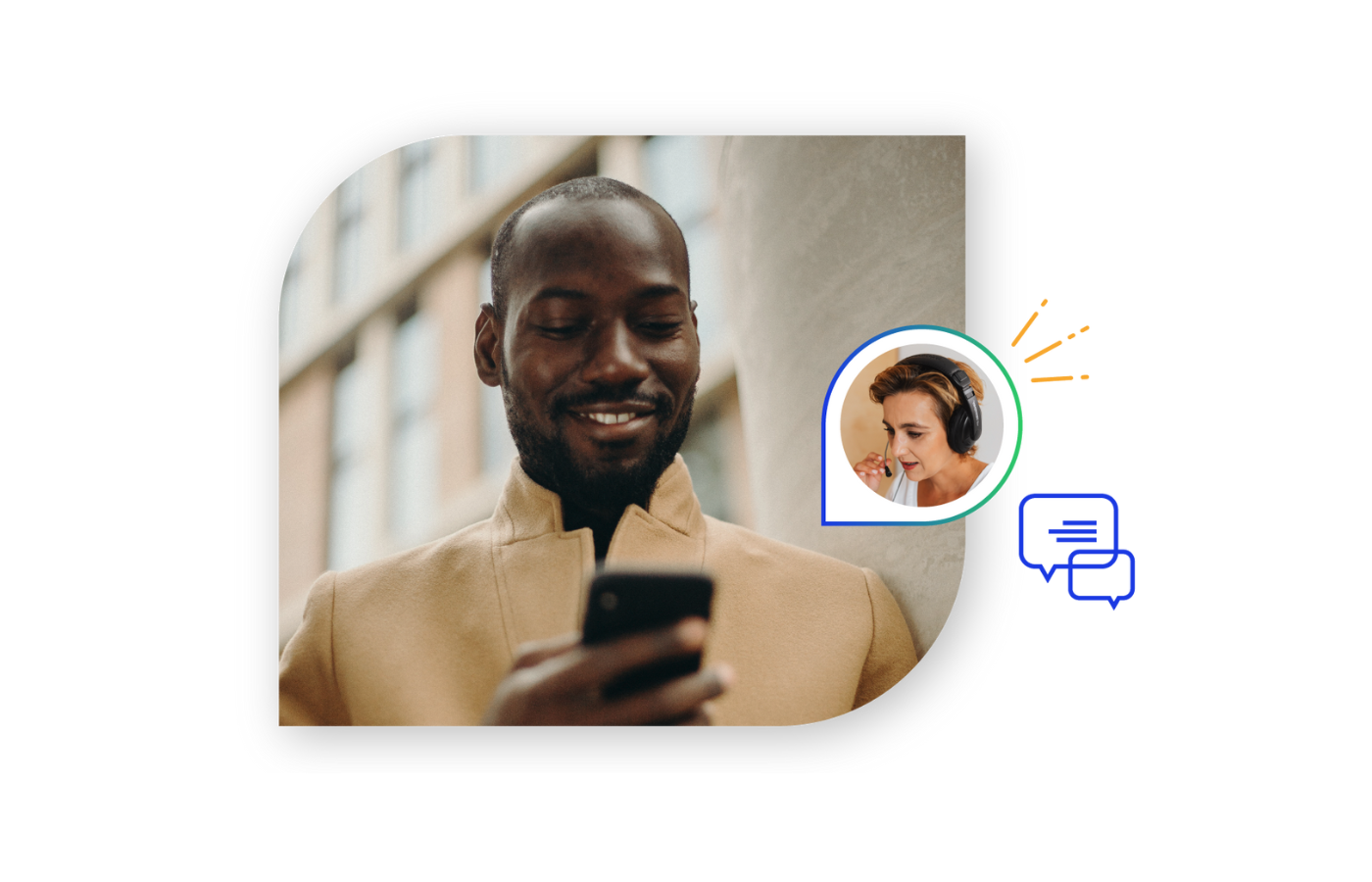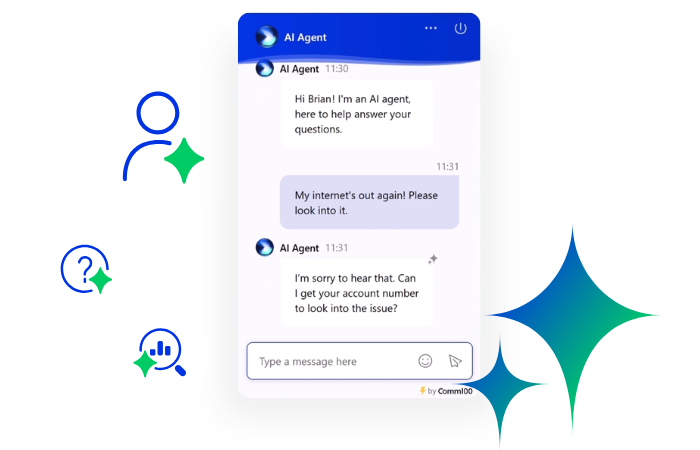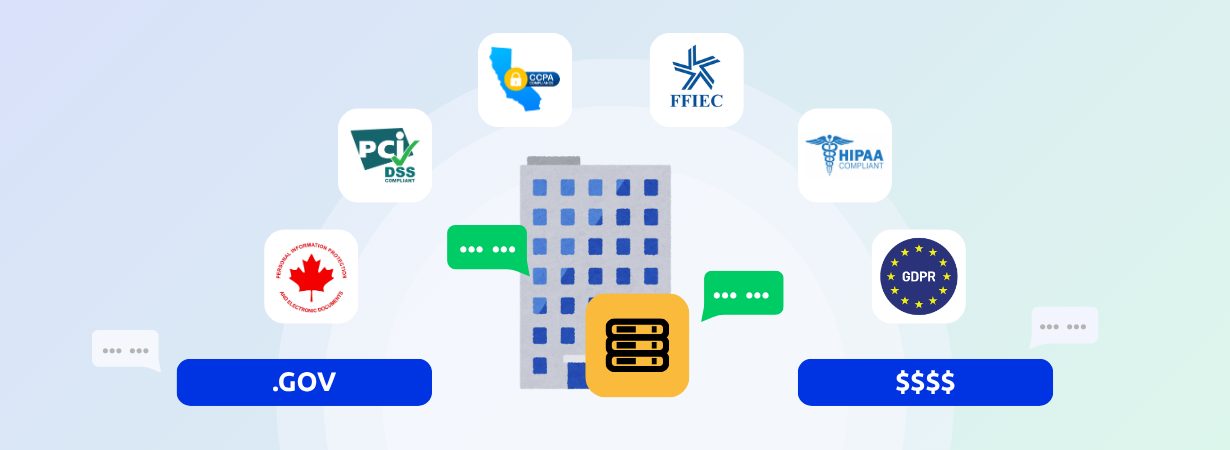With the rise of every new, digital communication channel,
there’s always certain misconceptions or hearsay spread around with it – and I
can’t blame them. How do you know what a new channel can do for you if you don’t
understand it?
But even though live chat has now become a mature customer
communication channel and a staple for many contact centers around the globe,
there are still some common myths floating about that are questionable at best
and untrue at their core.
Every communication channel has its challenges. To help you
better understand what live chat can and can’t do, we’ve put together this blog
post debunking the top most common six live chat myths:
- Myth #1: Live chat is only for real-time communication
- Myth #2: Live chat is only for certain demographics
- Myth #3: Live chat is limited to text
- Myth #4: Live chat needs agents to be available 24/7
- Myth #5: Live chat is only for simple queries
- Myth #6: Live chat is best used for triage or deflection
Myth #1: Live chat is only for real-time communication
One of the core characteristics of live chat is that it gives customers instant access to agents in real-time – this, in turn, causes organizations to use other platforms for asynchronous messaging.
Sometimes there may be customer issues that don’t need to be addressed right away. For example, feature requests, questions about new features or release updates, or other less time-sensitive queries.
While email may seem like the best avenue for these types of
communication, live chat can also collect this information through a contact
form – so all of your real-time and asynchronous messaging is kept in one
place.
Myth #2: Live chat is only for certain demographics
Ten years ago, when I was an inexperienced agent and computers were still a fairly recent thing, I assumed that older demographics wouldn’t use the internet. But at the launch of a new online portal, I was bowled over by the number of silver surfers who took to online communication like ducks to water. Nowadays, my Grandad could put any teenager to shame with his Candy Crush skills. Internet literacy isn’t a generational thing anymore.
It might be a well-known fact that millennials prefer chat over any traditional support channels like phone or email, but that doesn’t mean that Baby Boomers and Gen X aren’t on board either. In fact, you might be surprised who ends up using your live chat service – for many businesses, it can open up service to a whole new demographic who wouldn’t have bothered picking up the phone.
Myth #3: Live chat is limited to text
While live chat may have “chat” in the name, there’s so much
more to it than text-based communication. Audio, video,
screen sharing, and file transform live chat into a
rich, digital communication experience.
Live chat takes the best digital communication and brings it
together into one platform. It solves the phone’s dilemma of real-time
communication without the ability to share documents – while also eliminates
the need for constant screenshotting back and forth through email trying to
explain a highly complex issue.
A robust, modern live chat program empowers customers to connect with companies through a rich variety of media, allowing for problems to be solved in faster and more sophisticated ways than are available through single-media channels like the phone.
Myth #4: Live chat needs agents to be available 24/7
Customers expect a lot – and many expect you to be available
for them whenever they need it. But achieving 24/7 support on any channel is no
easy feat. Unless you have agents in different time zones, extending support beyond
office hours can be difficult for many companies.
Live chat can be combined with other tools to provide an “always-on” experience, even when your agents are asleep. The ability to look up a knowledge base from inside the chat window and leave offline messages means that customers don’t need to be left at a dead end when they come looking for help.
Besides, Chatbot technology has reached the point where chatbots are able to understand and respond to naturalized human language through AI capabilities like natural language processing. Properly trained chatbots can provide complete and accurate responses, process transactions and execute entire workflows. They can learn from your existing chat transcripts and your agent’s responses, allowing them to provide increasingly sophisticated experiences during your businesses’ off hours.
Simply put, as technology advances and customer expectations
increase, live chat automation allows you to be there 24/7 – without needing to
hire a whole new team.
Myth #5: Live chat is only for simple queries
If I had a penny for every time I heard the phrase ‘our queries are too complex for live chat’, I could buy a cruise ship. Firstly, live chat is flexible enough to be optimized for different industries and different use cases. Secondly, there is usually room to make complex queries simpler for customers, especially with technology to help.
Chat’s audio and video capabilities make it the perfect candidate for a telemedicine platform. Proactive chat invitations capture prospects at the right time and place, easily filling your pipeline with quality leads. Chatbots are the personal online shopping assistant that direct your customers to the perfect pair of shoes they wouldn’t have found without a lot of searching.
79% of customers prefer chat over any other support platform, and its multimedia capabilities make it easier for customers to be heard and understood. From answering quick FAQs to technical troubleshooting, processing transactions and beyond, live chat allows for all kinds of queries to be answered successfully – not just the easy ones.
Myth #6: Live chat is best used for triage or deflection
I’ll never understand why organizations set up live chat
only to pivot their customers to other channels like phone (ever chatted with a
company only to be told to telephone in? I have, and it kills me).
According to a study by Genesys, 61% of
customers have difficulty with channel pivoting. I do understand why –
businesses wedded to ancient legacy systems often have issues connecting up
data points to provide the same service across all channels.
Good live chat platforms become great through the use of
integrations and APIs, allowing for deflection and channel pivoting to become a
thing of the past. It’s not difficult to bring a CRM or other systems into live
chat, allowing for systems to communicate with each other without making
customers, or agents, go anywhere else than the live chat system.
If you’re only using chat for routing or capturing customer information, you’re not taking full advantage of your investment. When integrated properly into your tech stack, live chat has all the capabilities needed to boost FCR (first contact resolution) through getting your customers the resolutions they need, regardless of the channel they’re on.
Wrap-up
For those who come from a telephone background, moving to
live chat can seem like taking a step back from the customer. There is
something wonderful about connecting with a person over the phone, hearing them
laugh or give heartfelt thanks for your help. On the other hand, companies who already
fill the “gap” of written communication with customers through email may not see
the need for live chat.
But take off those rose-tinted glasses and think of the
times when the phone or email hasn’t been sufficient in handling customer
queries. When agents have been brought to tears by threats or screaming
customers on the phone, or when they have to spend an entire day trading screenshots
back and forth with a customer through email.
Live chat solves common challenges posed by these traditional channels and more – and while chat as a communication channel has its own unique limitations, these six common myths are not amongst those. Ultimately, with chat, it’s even easier than ever to cut to the chase, resolve customer issues, and help your agents be more efficient and productive.
Powerful live chat software
Offer real-time, personalized, efficient support that your customers and agents will love at 1/3 the cost of voice support.
Learn more
Comm100 Live Chat







